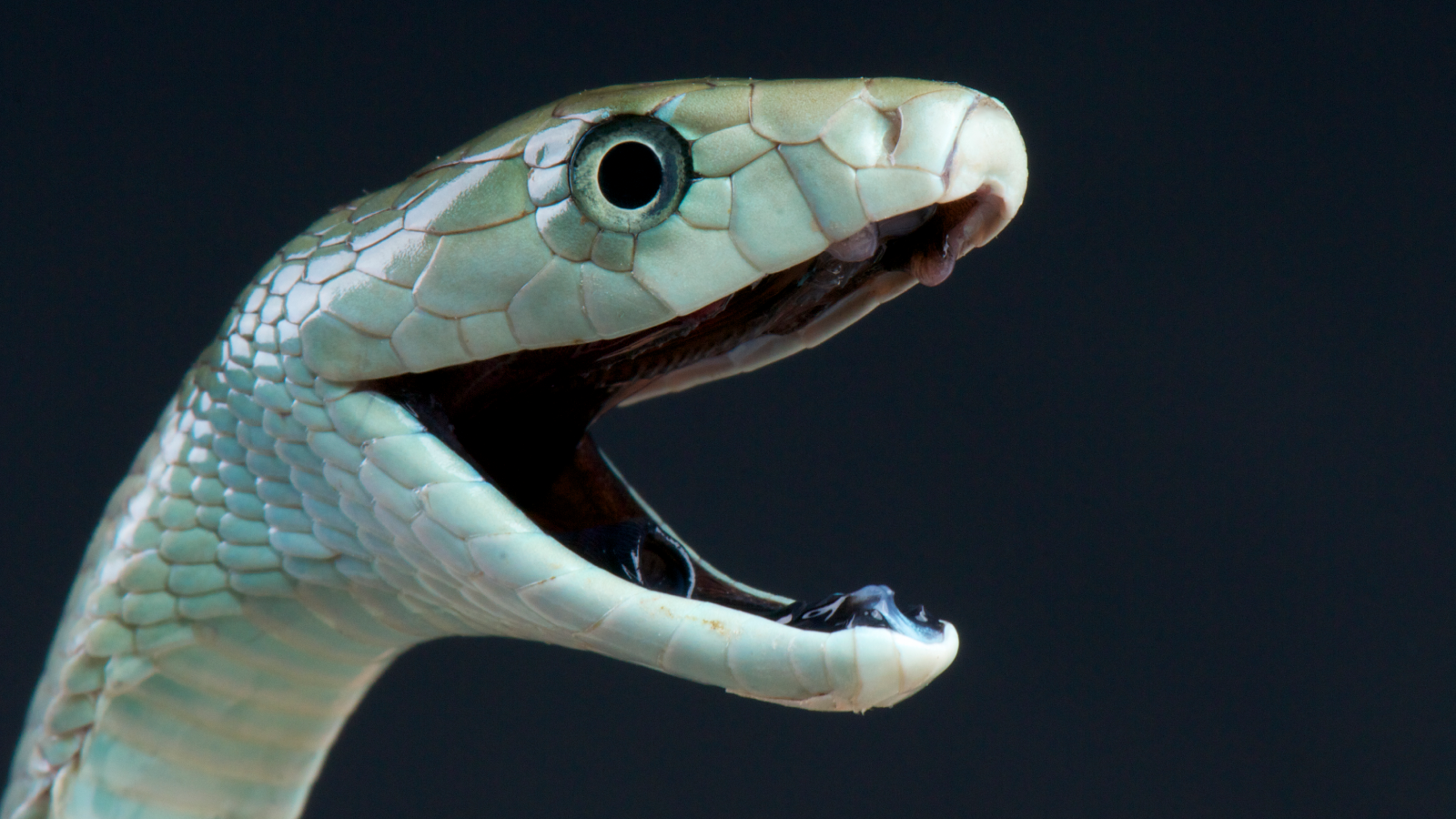Deadly mamba snakebites stop muscles from working — but sometimes, antivenom can send them into overdrive
Some victims of venomous mamba snakebites see their symptoms worsen after getting antivenom, displaying a different type of paralysis. A new study explores why.

Mamba snakebite symptoms sometimes worsen in patients after antivenom is administered — and scientists may finally know why.
The complex interplay of toxins and antivenom in the body unmasks hidden neurological symptoms from specific toxins in the venom. These masked symptoms appear once the effects of other, equally dangerous toxins are neutralized.
These findings, published in Sept. 26 in the journal Toxins, could help improve treatments for these deadly snakebites.
There are four species of mamba snakes, which belong to the genus Dendroaspis. Mamba bites are critical medical emergencies in sub-Saharan Africa, especially those of the black mamba, which is considered one of the world's deadliest snakes because its bite is 100% fatal unless treated immediately.
Without quick intervention, the neurotoxins in mamba venom can cause death from respiratory paralysis and cardiac arrest within an hour, contributing to the 30,000-plus snakebite deaths in the region annually.
Mamba toxins attack the nervous system, mostly by "hacking" nerve receptors on muscles, study co-author Brian Fry, a molecular biologist at the University of Queensland, told Live Science. This blocks nerve signals from the brain from reaching the muscles.
"You wouldn't even know that's happening unless you try to do something, like walk or breathe," Fry said. This effect — characterized by the inability of muscles to contract — is known as limp or flaccid paralysis, and existing antivenoms work well against the symptom. This form of paralysis is triggered by the venoms of three of the four mamba species: the western green, Jameson's mamba, and black mamba.
Get the world’s most fascinating discoveries delivered straight to your inbox.
But there is a second way that mamba venoms act, which has the opposite effect: it overloads the muscle with nerve signals, thus causing uncontrollable spasms. This is called rigid or spastic paralysis. "Instead of not being able to breathe because their diaphragm is completely limp, [now the patient] can't breathe because their diaphragm is completely contracted," Fry said.
Historically, scientists believed that the neurotoxins behind rigid paralysis were present only in the fourth species, the eastern green mamba venom. Venoms of the other three mambas were thought to cause only limp paralysis. "What wasn't known is that [rigid paralysis] has always been happening in the background with the other species as well," Fry said.
Fry and colleagues tested how venoms of the four mamba species attack the nervous system, as well as how well three antivenoms commercially available in Africa subdue these effects. They ran these tests using neuromuscular tissue from lab animals, which enabled them to chemically or electrically stimulate a piece of muscle. Introducing eastern green mamba venom caused spasms in the tissue, while venoms of the other mambas triggered no visible response — that is, until they attempted to stimulate the muscle and got no response because the venoms were preventing the muscles from contracting.
The three antivenoms successfully treated the limp-paralysis effects across all the mamba species, enabling the muscles to contract again. However, at that point, rigid paralysis set in in some cases, and the antivenoms showed poor effectiveness against that. In people bitten by mambas, "spastic paralysis can be fatal but the flaccid paralysis is more dangerous as its typically a more potent effect," Fry noted.
The researchers also noted that the venom of the black mamba — able to kill with just two drops of venom — varied between snakes hailing from Kenya and South Africa. The venoms varied both in how they affected the tissue and how they responded to antivenoms.
"Knowledge on geographical venom variation is needed in order to design antivenoms that contain antibodies against all medically relevant toxins from species, no matter where the species comes from," Andreas Hougaard Laustsen-Kiel, a biotechnologist at the Technical University of Denmark who wasn't involved with the study, told Live Science in an email. "The significance of the study is that it shows that antivenoms must be optimized to neutralize both toxin types to be effective."
Fry next wants to take a more comprehensive and wide-ranging look at the black mamba.
"We'd like to map more precisely which antivenom performs better in a particular region," he said, "which gives the doctors the kind of data that's crucial for evidence-based design of clinical management strategies."
This article is for informational purposes only and is not meant to offer medical advice.

Payal Dhar (she/they) is a freelance journalist, writing on science, technology, and society. They cover AI, engineering, materials science, cybersecurity, space, games, online communities, and any shiny new technology that catches their eye. She has written for Science News, Scientific American, Nature, Washington Post, Guardian, Chemical & Engineering News, IEEE Spectrum, and others. They also write science-fiction and fantasty. You can follow her @payaldhar.bluesky.social or read her work at payaldhar.contently.com.
You must confirm your public display name before commenting
Please logout and then login again, you will then be prompted to enter your display name.
